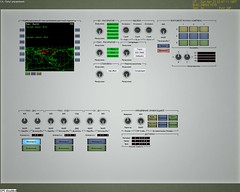Clue®
 You probably didn't notice, but I have been a bit (too) silent over the past +12 days ... the reason been that we recently switched into Skunk works mode. Mind you, this isn't a particularly well kept top secret project, as Castorp have left a clue on the M6's forum ... Speaking of my partner in crime, his meshing talent was recently recognized by a book writer (Philip Baker) and some images from our Salyut-1/Soyuz 11 addon for Orbiter will be included in The Story of Manned Space Stations (coming out this April) as illustrations! Woot! Way to go buddy! :-)
You probably didn't notice, but I have been a bit (too) silent over the past +12 days ... the reason been that we recently switched into Skunk works mode. Mind you, this isn't a particularly well kept top secret project, as Castorp have left a clue on the M6's forum ... Speaking of my partner in crime, his meshing talent was recently recognized by a book writer (Philip Baker) and some images from our Salyut-1/Soyuz 11 addon for Orbiter will be included in The Story of Manned Space Stations (coming out this April) as illustrations! Woot! Way to go buddy! :-)Now, if you are wondering what the skunk works mode is going to change here ... well it's simple, I won't be talking much about our Orbiter's addon project for the next little while (+6 months) ... which mean that this blog is going to get even more boring that it already is ;-) ... One thing I can share however, is that our team recently increased in size (first time ever!), with Kyra joining us as a technical adviser. She (yep it's a she!) have an encyclopedic knowledge of the Soviet space program and we are very excited and happy to have her on board :-)
Labels: OKB









